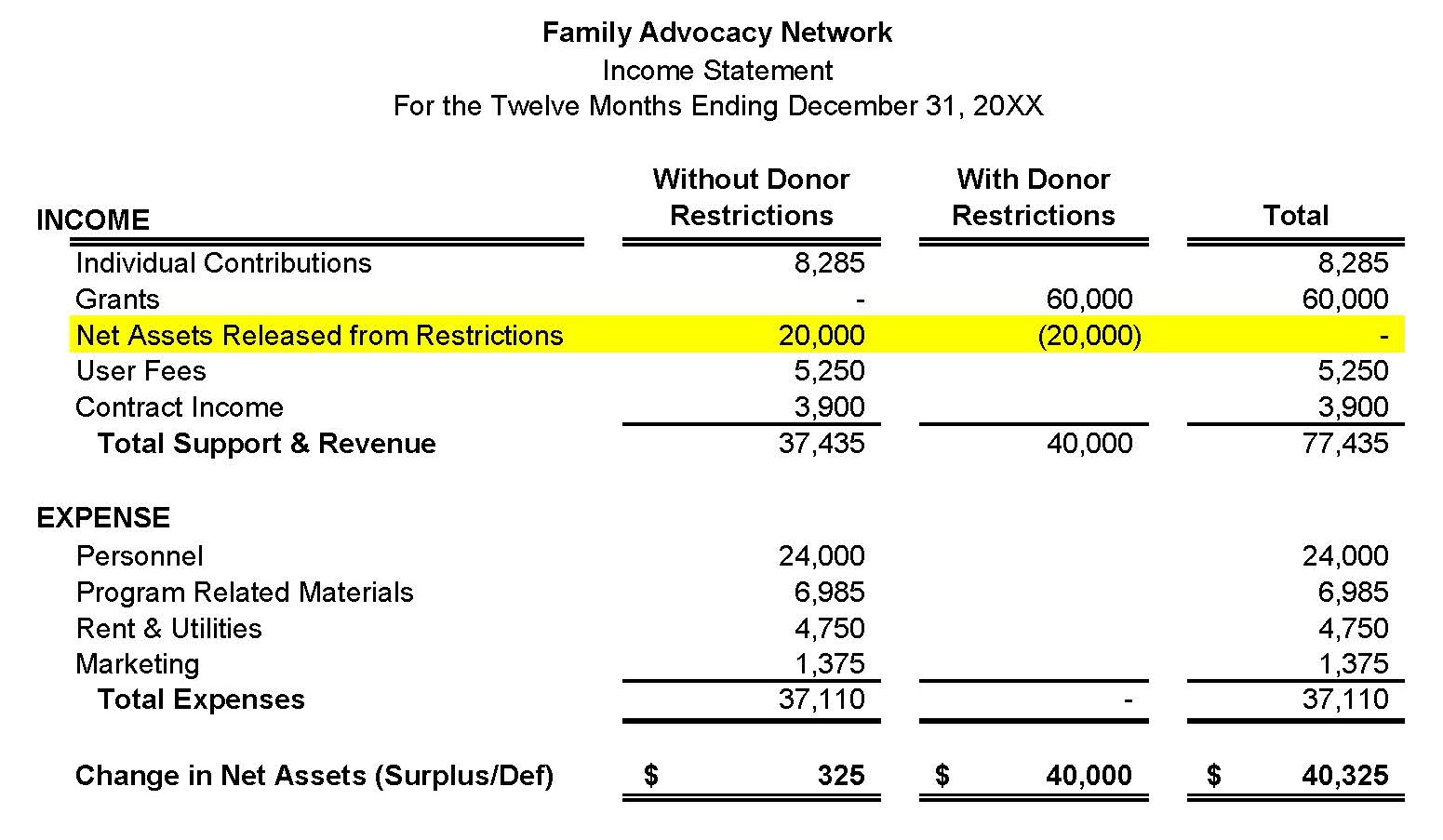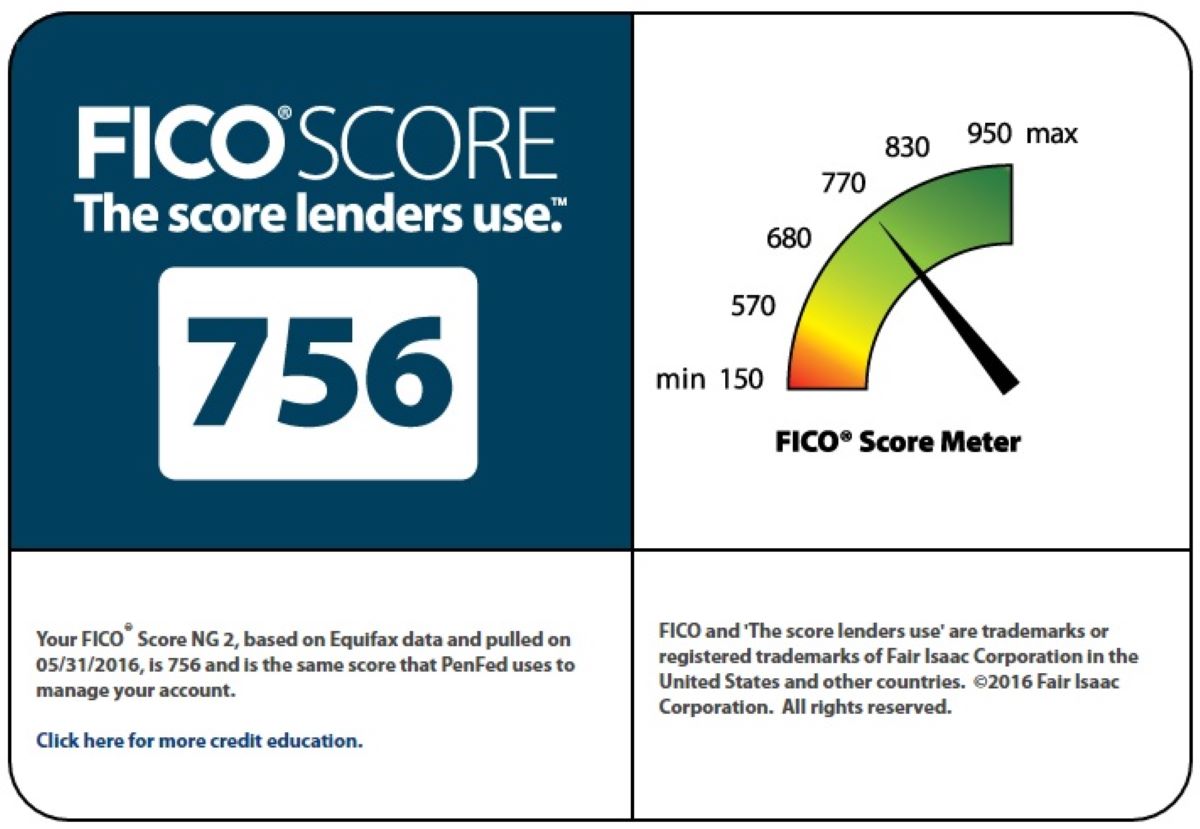Home>Finance>What Is Month End Closing Process In Accounting


Finance
What Is Month End Closing Process In Accounting
Published: October 12, 2023
Discover the efficient and vital month end closing process in finance and accounting. Streamline your financial reporting and ensure accurate bookkeeping.
(Many of the links in this article redirect to a specific reviewed product. Your purchase of these products through affiliate links helps to generate commission for LiveWell, at no extra cost. Learn more)
Table of Contents
- Introduction
- Definition of Month End Closing Process
- Importance of Month End Closing Process
- Steps Involved in Month End Closing Process
- Preparing Financial Statements
- Reconciliation of Accounts
- Accruals and Deferrals
- Reviewing and Analyzing Financial Data
- Adjusting Journal Entries
- Closing the Books
- Auditing and Internal Control Checks
- Common Challenges in Month End Closing Process
- Best Practices for Month End Closing Process
- Conclusion
Introduction
In the world of finance and accounting, accurate and timely reporting is crucial for the overall management and decision-making processes of a company. To achieve this, businesses carry out a month end closing process that ensures financial data is up-to-date, organized, and ready for analysis.
The month end closing process is a routine procedure that takes place at the end of each month, where all financial transactions and activities of the period are reviewed, reconciled, and documented. This process is essential for producing accurate financial statements, identifying any discrepancies or errors, and providing management with the information necessary for strategic planning.
During the month end closing process, various tasks and activities are performed, including the preparation of financial statements, reconciliation of accounts, accruals and deferrals, reviewing and analyzing financial data, adjusting journal entries, and closing the books. Each of these steps plays a vital role in ensuring the accuracy and completeness of the financial information being reported.
While the month end closing process may seem like a tedious and time-consuming task, its importance cannot be overstated. It allows businesses to have a clear understanding of their financial position, identify trends and patterns, and make informed decisions based on reliable data. This process also ensures compliance with regulatory requirements and provides transparency to stakeholders, such as investors, lenders, and shareholders.
In this article, we will delve deeper into the month end closing process, exploring the steps involved, the significance of each step, and common challenges that organizations may face. We will also discuss best practices to streamline the month end closing process and optimize its efficiency.
Now, let’s dive into the intricacies of the month end closing process and understand its role in maintaining the financial health of a business.
Definition of Month End Closing Process
The month end closing process refers to the series of tasks and activities that are performed at the end of each month to finalize the financial records for that particular period. It involves reviewing, reconciling, and documenting all financial transactions and activities that occurred throughout the month.
This process is essential to ensure accuracy and completeness in financial reporting. It provides a clear snapshot of the company’s financial position, allowing management to evaluate performance, make informed decisions, and comply with regulatory requirements.
The month end closing process typically involves several key activities, including preparing financial statements, reconciling accounts, making accruals and deferrals, reviewing and analyzing financial data, adjusting journal entries, closing the books, and performing auditing and internal control checks.
By following a structured month end closing process, businesses can ensure that financial information is accurate, reliable, and reflective of the company’s true financial position. It establishes a systematic approach to closing the financial books, allowing for consistent and timely reporting.
It is important to note that the specific steps and procedures involved in the month end closing process may vary depending on the size and complexity of the organization, as well as industry-specific requirements. However, the fundamental goal remains the same – to produce accurate and comprehensive financial statements that provide valuable insights into the company’s financial performance.
Overall, the month end closing process is a critical component of financial management, as it allows businesses to monitor their financial health, track key performance indicators, identify areas for improvement, and comply with legal and regulatory obligations.
Importance of Month End Closing Process
The month end closing process plays a crucial role in the financial management of a company. It serves as a vital checkpoint for ensuring accuracy, completeness, and transparency in financial reporting. Here are some key reasons why the month end closing process is of significant importance:
1. Accurate Financial Statements: The month end closing process ensures that financial statements, such as the balance sheet, income statement, and cash flow statement, accurately reflect the company’s financial position. It involves reconciling and verifying various accounts to detect any discrepancies or errors, thereby providing reliable information for decision-making and external reporting.
2. Compliance with Regulatory Requirements: Businesses are required to adhere to specific accounting standards and legal regulations. The month end closing process helps companies fulfill these obligations by ensuring proper recording of transactions, adherence to accounting principles, and compliance with regulations such as the Generally Accepted Accounting Principles (GAAP) or International Financial Reporting Standards (IFRS).
3. Timely Reporting: The month end closing process ensures that financial reports are prepared and submitted within the prescribed timeline. This is critical for stakeholders such as investors, lenders, and regulatory authorities who rely on timely and accurate financial information to assess the company’s performance and make informed decisions.
4. Strategic Planning: Accurate and up-to-date financial data obtained through the month end closing process enables management to analyze trends, identify patterns, and make informed strategic decisions. It provides insights into revenue and expense patterns, cash flow management, and helps in assessing the financial health of the business.
5. Detecting Errors and Fraud: The month end closing process includes various reconciliations and reviews, which act as a safeguard against errors and fraudulent activities. By carefully examining financial records, discrepancies can be identified and investigated, ensuring the integrity of the financial information.
6. Statutory and Internal Audits: The month end closing process provides a foundation for statutory audits and internal control assessments. By closing the books and ensuring accuracy in financial statements, external auditors can conduct their reviews efficiently. Internal auditors can also assess the effectiveness of internal controls during this process.
7. Transparency and Accountability: The month end closing process promotes transparency within the organization. It ensures that transactions are appropriately recorded, supporting documentation is in place, and financial information is accurately captured. This fosters accountability among employees and strengthens corporate governance.
In summary, the month end closing process is a critical financial management activity that enables businesses to produce accurate financial statements, comply with regulatory requirements, make informed decisions, and enhance transparency and accountability. By following this process diligently, companies can maintain financial integrity, mitigate risks, and build trust with stakeholders.
Steps Involved in Month End Closing Process
The month end closing process involves a series of steps that are essential for finalizing financial records and preparing accurate financial statements. While specific tasks may vary depending on the organization and industry, the following general steps are typically involved in the month end closing process:
1. Preparation: The first step is to gather and organize all necessary documents, including bank statements, invoices, receipts, and other relevant financial records. This ensures that all transactions are accounted for and ready for review.
2. Reconciliation of Accounts: This step involves reconciling various accounts, such as bank accounts, accounts receivable, accounts payable, and inventory. Any discrepancies or errors are identified and rectified to ensure the accuracy of financial data. Bank reconciliations are crucial to match the company’s records with the bank statements and verify the accuracy of cash balances.
3. Accruals and Deferrals: Accruals and deferrals refer to the recognition of income or expenses that are incurred in one accounting period but not yet recorded. This step involves adjusting entries to account for these items, such as recognizing revenue earned but not yet billed or recording expenses incurred but not yet paid. These accruals and deferrals ensure that financial statements reflect the economic reality of the business.
4. Reviewing and Analyzing Financial Data: In this step, financial data for the period is reviewed and analyzed to identify trends, patterns, and anomalies. Key performance indicators (KPIs) are evaluated, and any significant deviations from expectations are investigated. This analysis helps in understanding the company’s financial performance and aids in decision-making.
5. Adjusting Journal Entries: Adjusting entries are made to correct any errors or omissions in the financial records. This may include recording depreciation, recognizing unearned revenue, or adjusting inventory values. Adjusting journal entries are critical for ensuring the accuracy of financial statements.
6. Closing the Books: The closing process involves finalizing the financial records for the month. It includes transferring temporary accounts, such as revenue and expenses, to the retained earnings account. This step ensures that only relevant and accurate data is carried forward to the next accounting period.
7. Preparing Financial Statements: The final step in the month end closing process is the preparation of financial statements, including the balance sheet, income statement, and cash flow statement. These statements provide an overview of the company’s financial performance and position for the period.
It is important to note that the month end closing process may also involve additional steps specific to the company’s industry, such as inventory valuation or compliance reporting. Additionally, the use of accounting software can streamline and automate many of these steps, enhancing accuracy and efficiency.
By following these steps diligently and consistently, businesses can ensure the accuracy, completeness, and transparency of their financial records, enabling informed decision-making and compliance with regulatory requirements.
Preparing Financial Statements
Preparing financial statements is a critical step in the month end closing process. Financial statements provide a comprehensive overview of a company’s financial performance, position, and cash flow for a specific period. The following are the key financial statements that are typically prepared during this process:
1. Balance Sheet: The balance sheet provides a snapshot of the company’s financial position at a specific point in time. It presents assets, liabilities, and shareholders’ equity, enabling stakeholders to assess the company’s solvency and liquidity. The balance sheet includes items such as cash, accounts receivable, inventory, accounts payable, long-term debt, and shareholders’ equity.
2. Income Statement: The income statement, also known as the profit and loss statement, summarizes the revenues and expenses incurred during the period. It identifies the company’s net income or loss, providing insights into its ability to generate profits. The income statement includes revenue, cost of goods sold, operating expenses, taxes, and other income or expenses.
3. Cash Flow Statement: The cash flow statement highlights the cash inflows and outflows during the period, categorizing them into operating, investing, and financing activities. It provides an understanding of the company’s cash position, operating cash flow, and its ability to generate and use cash effectively.
4. Statement of Shareholders’ Equity: This statement shows changes in shareholders’ equity during the period, including the issuance or repurchase of shares, net income or loss, dividends paid, and other equity transactions. It helps stakeholders understand the company’s capital structure and how ownership and retained earnings have changed over time.
To prepare these financial statements, the following steps are typically followed:
1. Compilation of Trial Balance: The trial balance is compiled by listing all the general ledger accounts and their balances at the end of the period. It includes both revenue and expense accounts, as well as asset, liability, and equity accounts.
2. Adjusting Entries: Adjusting journal entries are made to record any accrued or deferred items and correct any errors or omissions. These adjustments ensure that revenues and expenses are recognized in the appropriate period and that asset and liability values are accurate.
3. Closing Entries: Temporary accounts, such as revenue and expense accounts, are closed out by transferring their balances to the retained earnings account. This process resets the temporary accounts for the next accounting period.
4. Preparation of Financial Statements: Once the trial balance is adjusted and closing entries are made, the financial statements can be prepared. Each statement is presented in a consistent format, adhering to accounting standards and regulatory requirements.
Furthermore, it is essential to ensure that the financial statements are accurate, reliable, and in compliance with accounting principles, such as Generally Accepted Accounting Principles (GAAP) or International Financial Reporting Standards (IFRS). Internal and external auditors may review the financial statements for accuracy and completeness.
By preparing accurate and comprehensive financial statements, businesses provide stakeholders with valuable insights into the company’s financial performance, position, and cash flow. It enables informed decision-making, enhances transparency, and contributes to the overall financial health of the organization.
Reconciliation of Accounts
Reconciliation of accounts is a vital step in the month end closing process that ensures the accuracy and integrity of financial records. It involves comparing and balancing various accounts to identify and rectify discrepancies or errors. The reconciliation process extends beyond bank accounts and typically includes accounts such as accounts receivable, accounts payable, inventory, and other balance sheet and income statement items. Here are the key aspects of the reconciliation of accounts:
1. Bank Reconciliation: Bank reconciliation is the most common form of account reconciliation. It involves comparing the company’s records with the bank statement to ensure that all transactions are accurately recorded. This process includes verifying deposits, checks, and other transactions, and resolving any discrepancies. Bank reconciliation is critical for identifying errors, detecting unauthorized transactions, and reconciling cash balances.
2. Accounts Receivable Reconciliation: Accounts receivable reconciliation involves comparing the balances in the accounts receivable ledger with customer payments and invoices. It ensures that all customer payments have been properly recorded, matches outstanding invoices with payments received, and addresses any discrepancies. This reconciliation helps track outstanding customer balances, identify potential bad debts, and maintain accurate financial records.
3. Accounts Payable Reconciliation: Accounts payable reconciliation focuses on verifying the accuracy of vendor invoices, payment records, and outstanding balances. It involves reconciling vendor statements with the company’s records to ensure that all invoices have been properly recorded and that payments are correctly applied. Accounts payable reconciliation helps avoid duplicate payments, identifies any billing errors or discrepancies, and maintains good relationships with vendors.
4. Inventory Reconciliation: Inventory reconciliation ensures that the recorded inventory balances align with the physical inventory on hand. It involves comparing the quantities and values of inventory as per the books with actual stock counts. Any discrepancies are investigated, and adjustments are made to reflect the correct inventory value. This reconciliation is crucial for accurate financial reporting, cost of goods sold calculations, and preventing inventory discrepancies.
5. Other Balance Sheet Reconciliations: Apart from the above, other balance sheet accounts such as prepaid expenses, fixed assets, accruals, and deferrals are also reconciled during the month end closing process. These reconciliations ensure that various asset and liability accounts are accurate and properly recorded. They involve verifying balances, examining supporting documentation, and addressing any discrepancies or errors.
Reconciliation of accounts is a crucial control measure that helps identify errors, detect fraud, and ensure the accuracy of financial records. It plays a significant role in maintaining the integrity of financial statements and fostering trust among stakeholders. By completing these reconciliations during the month end closing process, companies can enhance the accuracy, reliability, and transparency of their financial information.
Accruals and Deferrals
Accruals and deferrals are key accounting concepts that are addressed in the month end closing process. They involve the recognition and adjustment of revenues and expenses to ensure that financial statements reflect the economic reality of a business. Accruals and deferrals help match revenues and expenses to the period in which they are incurred, providing a more accurate representation of a company’s financial position. Here’s a closer look at accruals and deferrals:
Accruals:
Accruals are the recognition of revenues or expenses that have been incurred but have not yet been recorded. They are necessary for accurate financial reporting, even if the related cash flows have not taken place. Common examples of accruals include:
1. Accrued Revenues: Accrued revenues represent revenue earned but not yet billed or received. For example, a service-based company that completes a project in a particular month but bills the client in the following month would record the revenue as an accrued revenue in the month end closing process.
2. Accrued Expenses: Accrued expenses are expenses that have been incurred but not yet paid or recorded. For instance, if a company receives a utility bill for services used during the month but the actual payment is scheduled for the next month, the amount is recognized as an accrued expense.
Accruals ensure that revenues and expenses are recognized in the appropriate period, aligning with the matching principle in accounting. They help provide a more accurate representation of a company’s financial performance by recognizing the economic activity of the business, even if cash transactions have not yet occurred.
Deferrals:
Deferrals, on the other hand, involve the recognition of cash received or paid in advance for goods or services that have not been delivered or consumed. These adjustments are made to properly allocate revenues and expenses to the period in which the related economic activity occurs. Some common deferrals include:
1. Deferred Revenues: Deferred revenues are cash received in advance for goods or services that have not yet been delivered or earned. For example, a company that receives an advance payment for a future service would record the cash as deferred revenue and recognize it as revenue when the service is provided.
2. Deferred Expenses: Deferred expenses occur when cash is paid in advance for goods or services that will be consumed over multiple periods. For instance, a company that pays an annual insurance premium upfront would record the amount as a deferred expense and allocate it as an expense over the coverage period.
By deferring recognition until the related goods or services are delivered or consumed, deferrals ensure that expenses and revenues are accurately matched, providing a more precise measurement of a company’s financial performance.
The month end closing process involves reviewing and adjusting accruals and deferrals to ensure financial statements reflect the appropriate revenue and expense recognition. By properly recording and adjusting for these items, businesses can provide a more accurate portrayal of their financial position, comply with accounting standards, and make informed decisions based on realistic financial data.
Reviewing and Analyzing Financial Data
Reviewing and analyzing financial data is a crucial step in the month end closing process. It involves assessing the company’s financial performance, identifying trends and patterns, and gaining insights into various aspects of the business. This process enables management to make informed decisions, identify areas for improvement, and plan for the future. Here are the key aspects of reviewing and analyzing financial data:
1. Assessing Financial Performance: One of the primary objectives of reviewing financial data is to evaluate the company’s financial performance during the period. This involves analyzing revenue growth, profitability, gross margin, operating expenses, and other key performance indicators (KPIs). By assessing financial performance, management can identify areas of strength and weakness and take strategic actions accordingly.
2. Comparing Against Budgets and Forecasts: Financial data is compared against budgets and forecasts to assess the company’s actual performance against its planned goals. Variance analysis helps identify discrepancies and understand the reasons behind them. This analysis provides valuable insights into the accuracy of projections, helps in making course corrections, and aids in future budgeting.
3. Identifying Trends and Patterns: Analyzing financial data allows for the identification of trends and patterns over time. By comparing data from different periods, patterns can be revealed, enabling management to understand the company’s financial performance and identify potential areas of business growth or risks. Recognizing these trends helps in making strategic decisions and allocating resources appropriately.
4. Examining Key Ratios and Metrics: Utilizing financial ratios and metrics is an essential part of analyzing financial data. Ratios such as liquidity ratios, profitability ratios, and efficiency ratios provide insights into the company’s financial health and performance. By examining these ratios, management can identify areas that may need improvement and take corrective actions.
5. Analyzing Cash Flow: Reviewing cash flow statements is crucial for understanding the company’s cash position and its ability to generate and manage cash. Cash flow analysis helps in projecting future cash needs, evaluating liquidity, and managing working capital effectively. It also enables the identification of any problematic cash flow trends that need attention.
6. Identifying Key Drivers of Financial Performance: Reviewing and analyzing financial data helps identify the drivers behind the company’s financial performance. By examining various revenue and expense categories, management can gain insights into the factors influencing financial results. This understanding aids in making informed decisions to improve profitability, cost control, and revenue generation.
7. Detecting Anomalies or Irregularities: Analyzing financial data also serves as a control measure to detect irregularities or anomalies. It helps identify any unusual fluctuations, suspicious transactions, or potential errors in the financial records. Detecting these anomalies early on allows for prompt investigation and resolution.
The review and analysis of financial data provide meaningful insights into the company’s financial performance, position, and cash flow, aiding management in decision-making and strategic planning. By carefully examining these data, businesses can identify strengths, weaknesses, opportunities, and threats, enabling them to take proactive measures to improve performance and achieve their financial goals.
Adjusting Journal Entries
Adjusting journal entries are a critical part of the month end closing process. They are made to ensure that financial statements accurately reflect the financial position, results of operations, and cash flows of a company. Adjusting entries are necessary to record transactions or events that occurred in the accounting period but were not initially captured in the regular journal entries. Here is an overview of adjusting journal entries:
1. Accruals: Adjusting entries are made to recognize revenues or expenses that have been earned or incurred but have not been recorded in the regular journal entries. Accrued expenses and accrued revenues are common examples of accruals. For example, if a company has performed a service for a client but has not yet billed them, an adjusting entry is made to record the revenue earned.
2. Prepaid Expenses: Adjusting entries are also made for prepaid expenses. These entries allocate the cost of assets or services that have been paid in advance over the accounting periods in which they are used or consumed. For instance, if a company pays for an annual insurance premium at the beginning of the year, an adjusting entry is made each month to expense a portion of that premium over the corresponding months.
3. Depreciation and Amortization: Adjusting entries are necessary to recognize the depreciation or amortization of long-term assets. They allocate the cost of the asset over its useful life. By making adjusting entries for depreciation or amortization, the expense is spread out over several periods, reflecting the gradual wear and tear or the expiration of intangible assets.
4. Unearned Revenue: Adjusting entries are made to record the recognition of unearned revenue. Unearned revenue refers to the cash received in advance for goods or services that have not been delivered or earned. These entries reclassify the unearned revenue to revenue as the goods or services are provided.
5. Accrual Reversal: In certain cases, adjusting entries may also be used to reverse previously recorded accruals. This is done when an accrual was previously recorded, but the actual transaction did not occur, or circumstances changed, resulting in a reversal of the accrual.
By making these adjusting journal entries, financial statements are adjusted to reflect the proper revenue, expense, and asset or liability values. This ensures that financial statements comply with accounting principles, accurately represent the financial position of the company, and provide reliable information for decision-making and external reporting.
It is essential to note that adjusting journal entries follow the accrual basis of accounting, which recognizes revenues and expenses when earned or incurred, regardless of the timing of the corresponding cash flows. Adjustments need to be made as part of the month end closing process to align financial statements with the economic activity of the business during the accounting period.
Overall, adjusting journal entries play a vital role in the month end closing process by ensuring that the financial statements reflect the true financial position and operating results of the company. By making these adjustments, businesses can provide more accurate and meaningful financial reporting to stakeholders.
Closing the Books
Closing the books is the final step in the month end closing process. It involves completing all necessary tasks to finalize a company’s financial records for the accounting period, ensuring that the books are accurate and ready for the next period. Here is an overview of the process of closing the books:
1. Completing Revenue and Expense Entries: To close the books, the revenue and expense accounts are cleared out for the period. The balances of these temporary accounts are transferred to the appropriate permanent accounts such as retained earnings. This process resets the revenue and expense accounts to zero for the new accounting period.
2. Closing Entries: Closing entries are made to transfer the balances of the temporary accounts to the appropriate permanent accounts. Debit balances in revenue accounts are closed by transferring them to the income summary account, and credit balances in expense accounts are closed by transferring them to the income summary account. The income summary account is then closed, and its balance is transferred to the retained earnings account.
3. Accumulating Comprehensive Income: If applicable, comprehensive income, which includes items not recognized in the income statement, is accumulated. This may include items such as foreign currency translation adjustments or unrealized gains or losses on available-for-sale investments.
4. Verifying Account Balances: Before closing the books, it is essential to verify the accuracy of account balances. This includes reconciling all accounts, ensuring that debits and credits match, and reviewing supporting documentation for various transactions.
5. Generating Financial Statements: Once the books are closed and account balances are verified, financial statements are prepared. The balance sheet, income statement, and cash flow statement are typically generated to provide a snapshot of the company’s financial position, performance, and cash flow for the period.
6. Archiving and Filing: After the financial statements are prepared, the necessary documents, records, and reports are archived and filed for future reference and compliance requirements. This includes saving electronic copies and organizing physical copies of the financial statements and supporting documentation.
Closing the books is an important process that helps ensure the accuracy and completeness of a company’s financial records. By completing this process, businesses set the stage for a fresh start in the new accounting period. It allows for accurate financial reporting, compliance with accounting standards, and effective management decision-making based on reliable and up-to-date financial information.
It is crucial to note that while closing the books typically occurs at the end of each month, it is also performed at the end of each quarter and fiscal year to summarize the financial activities of those periods. The frequency of closing the books may vary depending on the company’s policies, regulatory requirements, and industry standards.
Overall, closing the books is a critical step in the month end closing process as it ensures financial records are accurate, provides a clear financial picture, and prepares the company for the next accounting period.
Auditing and Internal Control Checks
Auditing and internal control checks are an integral part of the month end closing process. These activities provide assurance that the financial statements are reliable, accurate, and comply with applicable accounting standards and regulations. They help ensure that the company’s financial records are in order, internal controls are effective, and potential errors or irregularities are detected and addressed. Here is an overview of auditing and internal control checks in the month end closing process:
1. Internal Control Evaluation: As part of the month end closing process, internal controls are assessed and evaluated. Internal controls are procedures, policies, and systems implemented by a company to safeguard assets, ensure reliable financial reporting, and promote compliance with regulations. The evaluation helps ensure that internal controls are in place and operating effectively to mitigate risks.
2. Auditing Financial Statements: Auditing refers to the independent examination and verification of financial statements to provide an objective opinion on their fairness, accuracy, and compliance with accounting principles. Auditors review the company’s financial records, verify supporting documentation, perform analytical procedures, and assess internal controls. The audit provides assurance to stakeholders that the financial statements can be relied upon for making informed decisions.
3. Management Review and Approval: During the month end closing process, management reviews and approves the financial statements. This step ensures that the management team understands the financial results, confirms the accuracy of the information presented, and takes responsibility for its content. Management’s review helps maintain accountability and transparency within the organization.
4. Compliance with Regulatory Requirements: Auditing and internal control checks also aim to ensure compliance with regulatory requirements. This includes adherence to accounting standards such as Generally Accepted Accounting Principles (GAAP) or International Financial Reporting Standards (IFRS), as well as specific industry regulations. Compliance is essential for avoiding penalties, maintaining financial integrity, and building trust with stakeholders.
5. Identification of Risks and Weaknesses: Auditing and internal control checks help identify potential risks, weaknesses, or inefficiencies in the financial reporting and control processes. By conducting a thorough examination, auditors and internal control evaluators can pinpoint areas that require improvement, implement corrective measures, and strengthen the organization’s financial controls.
6. Fraud Detection: Audit procedures also include activities aimed at detecting fraud or irregularities. Auditors are trained to identify red flags, unusual transactions, and inconsistent patterns that may indicate fraudulent activities. Through these procedures, potential instances of fraud can be detected and reported, ensuring the integrity of financial reporting.
7. Enhancing Trust and Transparency: Ultimately, the auditing and internal control checks in the month end closing process contribute to building trust and maintaining transparency with stakeholders. External auditors provide an objective assessment of financial statements, while internal control evaluations help demonstrate the company’s commitment to sound financial management practices.
By incorporating auditing and internal control checks into the month end closing process, companies can improve the accuracy and reliability of their financial information, mitigate risks, comply with regulations, and enhance transparency and accountability. These activities provide stakeholders with confidence in the financial statements, facilitating effective decision-making and fostering trust in the organization.
Common Challenges in Month End Closing Process
The month end closing process is a complex and time-sensitive activity, often presenting several challenges that organizations need to address. These challenges can impact the efficiency and accuracy of the process. Here are some common challenges encountered in the month end closing process:
1. Tight Timelines: The month end closing process typically has strict deadlines to ensure timely financial reporting. Short timelines can create pressure and increase the risk of errors or omissions if tasks are rushed. Organizations need to have proper planning and efficient workflows to meet these deadlines.
2. Volume of Transactions: As businesses grow, the volume of transactions also increases. This can result in a larger amount of data to process, reconcile, and analyze during the month end closing process. Managing and organizing this data can be a challenge, requiring robust systems and processes.
3. Manual Processes: Reliance on manual data entry, calculations, and reconciliations can lead to errors or delays in the month end closing process. Manual processes are time-consuming and increase the risk of human error. Adopting automation tools and software can help streamline and improve accuracy.
4. Incomplete or Inaccurate Data: If data is missing, incomplete, or inaccurate, it can hinder the month end closing process. Incomplete data may require additional time and effort to gather the necessary information, delaying the closing process. Thorough data validation and reconciliation procedures are crucial to address this challenge.
5. Lack of Coordination: The month end closing process involves various departments and individuals, including finance, accounting, operations, and management. Lack of coordination and poor communication between these teams can lead to delays, inconsistencies, and misaligned expectations. Effective communication and collaboration are key to overcoming this challenge.
6. Complexity of Account Reconciliation: Reconciling accounts, particularly complex ones, can be challenging. Account reconciliations require meticulous attention to detail, understanding of the underlying transactions, and knowledge of accounting principles. Inadequate reconciliation processes can result in inconsistent or unreliable financial statements.
7. System Integration and Compatibility: Organizations that use multiple systems for different functions may face challenges in integrating data seamlessly. Data consolidation from different systems can be time-consuming and error-prone. Ensuring compatibility and smooth data flow between systems is essential for an efficient month end closing process.
8. Resource Constraints: In some cases, organizations may face resource constraints, such as a lack of qualified personnel or limited technology infrastructure. Insufficient resources can hamper the smooth execution of the month end closing process and impede timely and accurate financial reporting.
9. Changes in Regulations or Accounting Standards: Changes in regulatory requirements or accounting standards can pose challenges during the month end closing process. Organizations must stay updated with these changes, adapt their processes, and ensure compliance to avoid disruptions and ensure accurate financial reporting.
To address these challenges, organizations can implement measures such as adopting automation tools, improving data management processes, enhancing communication and collaboration, providing training and resources to personnel, and staying informed about regulatory changes.
By recognizing and proactively addressing these challenges, organizations can streamline the month end closing process, improve the accuracy and timeliness of financial reporting, and establish stronger financial management practices.
Best Practices for Month End Closing Process
The month end closing process is a critical activity that requires careful planning, coordination, and attention to detail. Implementing best practices can streamline the process, improve efficiency, and enhance the accuracy of financial reporting. Here are some key best practices for an effective month end closing process:
1. Establish a Month End Closing Checklist: Create a detailed checklist outlining all the tasks, deadlines, and responsibilities involved in the month end closing process. This checklist helps ensure that all necessary activities are completed, provides a clear roadmap for the closing process, and serves as a reference for future periods.
2. Maintain a Month End Closing Calendar: Develop a calendar that includes all key dates and deadlines for the month end closing process. This calendar should include deadlines for data submission, reconciliation, journal entries, and financial statement preparation. Communicate the calendar to relevant stakeholders to ensure everyone is aware of the timelines and can plan accordingly.
3. Improve Data Management and Reconciliation Processes: Implement robust data management practices to ensure accurate and complete data for financial reporting. Regularly reconcile accounts, verify transactional data, and resolve any discrepancies or errors. Utilize automated reconciliation tools or software to streamline the process and reduce the risk of manual errors.
4. Automate Routine Tasks: Utilize technology and automation tools to streamline routine and repetitive tasks. Automation can help improve accuracy, reduce manual effort, and save time. Consider automating tasks such as data entry, account reconciliation, and report generation to enhance efficiency in the month end closing process.
5. Enhance Communication and Collaboration: Foster clear and effective communication between all involved departments and individuals. Establish regular meetings or checkpoints to discuss progress, address challenges, and ensure alignment. Encourage cross-department collaboration to promote coordination and a holistic approach to the month end closing process.
6. Standardize Processes and Documentation: Develop standardized processes, templates, and documentation for the month end closing process. This promotes consistency, improves efficiency, and simplifies the training of new staff. Clearly document procedures, policies, and guidelines to ensure that tasks are executed consistently and accurately.
7. Conduct Regular Training and Education: Invest in ongoing training and education for the finance and accounting team. Stay updated on the latest accounting standards, regulations, and best practices. Training ensures that staff members are equipped with the necessary knowledge and skills to perform their roles effectively, improving the overall month end closing process.
8. Real-Time Monitoring and Review: Monitor and review financial data throughout the month to identify any discrepancies or errors early on. Implement real-time reporting tools or dashboards that provide visibility into key financial metrics. Regularly review the accuracy and completeness of financial data to minimize surprises during the month end closing process.
9. Perform Post-Closing Analysis: Conduct a post-closing analysis to evaluate the effectiveness of the month end closing process. Identify areas for improvement, gather feedback from stakeholders, and implement necessary changes for future periods. Continuously evaluate and refine the process to enhance efficiency and accuracy.
By implementing these best practices, organizations can optimize the month end closing process, improve the accuracy and timeliness of financial reporting, enhance collaboration among departments, and ultimately strengthen financial management practices. These practices contribute to better decision-making, ensure compliance with regulations, and foster trust with stakeholders.
Conclusion
The month end closing process is a vital component of financial management in organizations. It ensures the accuracy, completeness, and timeliness of financial reporting, enabling informed decision-making, compliance with regulatory requirements, and the overall financial health of the company.
Throughout the month end closing process, several key steps are involved, including preparing financial statements, reconciling accounts, making accruals and deferrals, reviewing and analyzing financial data, adjusting journal entries, closing the books, and conducting auditing and internal control checks. Each step plays a crucial role in ensuring accurate financial information and maintaining robust financial controls.
However, the month end closing process also presents its fair share of challenges. These challenges include tight timelines, a high volume of transactions, manual processes, incomplete or inaccurate data, lack of coordination, complexity in account reconciliation, system integration issues, resource constraints, and changes in regulations or accounting standards.
To overcome these challenges, organizations should follow best practices such as establishing a month end closing checklist and calendar, improving data management and reconciliation processes, automating routine tasks, enhancing communication and collaboration, standardizing processes and documentation, conducting regular training and education, performing real-time monitoring and review, and conducting post-closing analysis.
By implementing these best practices, organizations can streamline the month end closing process, enhance accuracy, reduce errors, improve efficiency, meet deadlines, and ultimately contribute to better financial reporting and decision-making. It is crucial for businesses to continuously evaluate and refine their month end closing process to adapt to changing needs, regulations, and advancements in technology.
In conclusion, the month end closing process is a critical financial management activity that ensures the reliability and transparency of financial information. By carrying out this process effectively, organizations can maintain financial integrity, make informed decisions, and build trust with stakeholders, ultimately contributing to the overall success and growth of the business.














